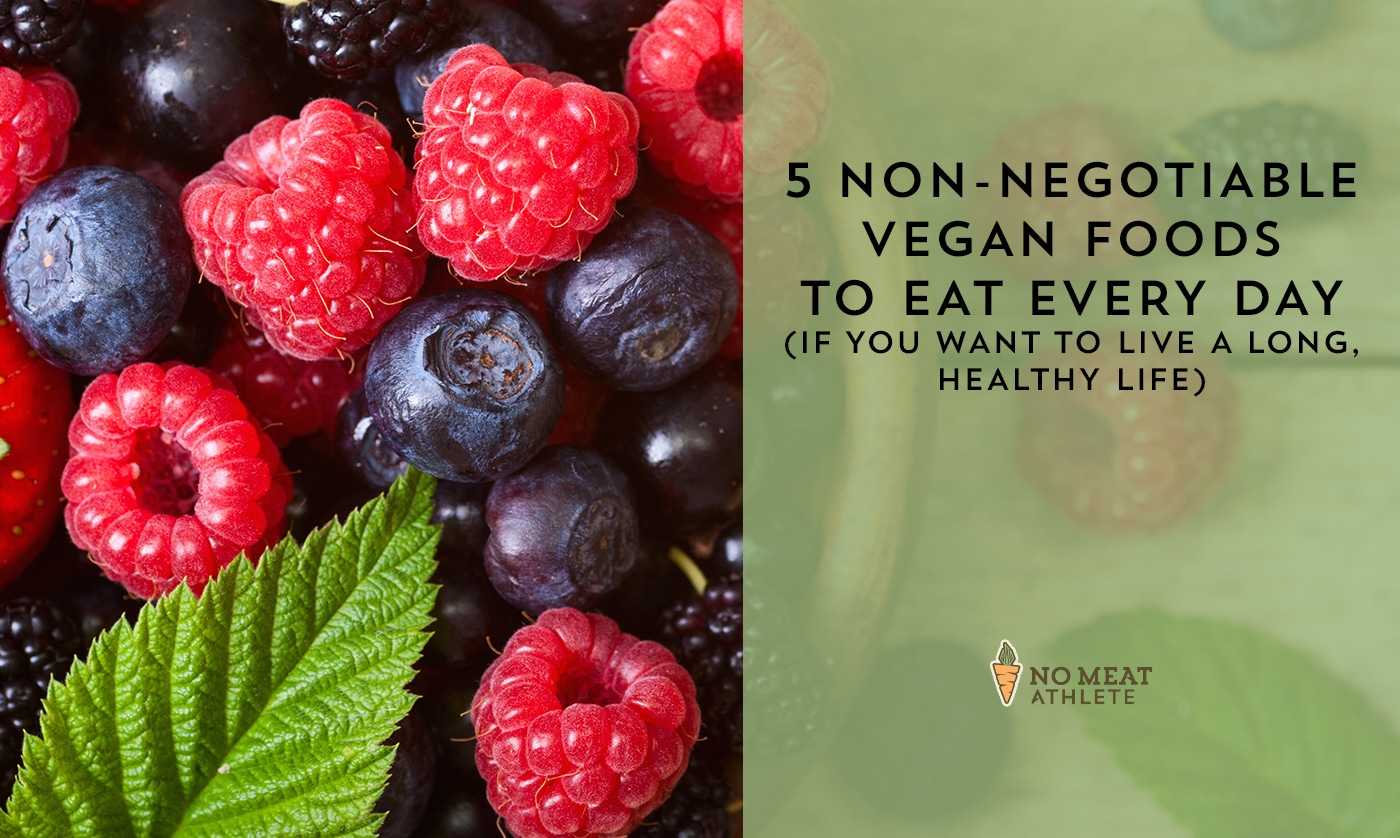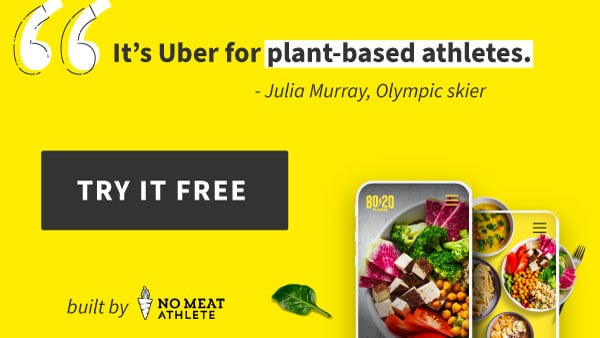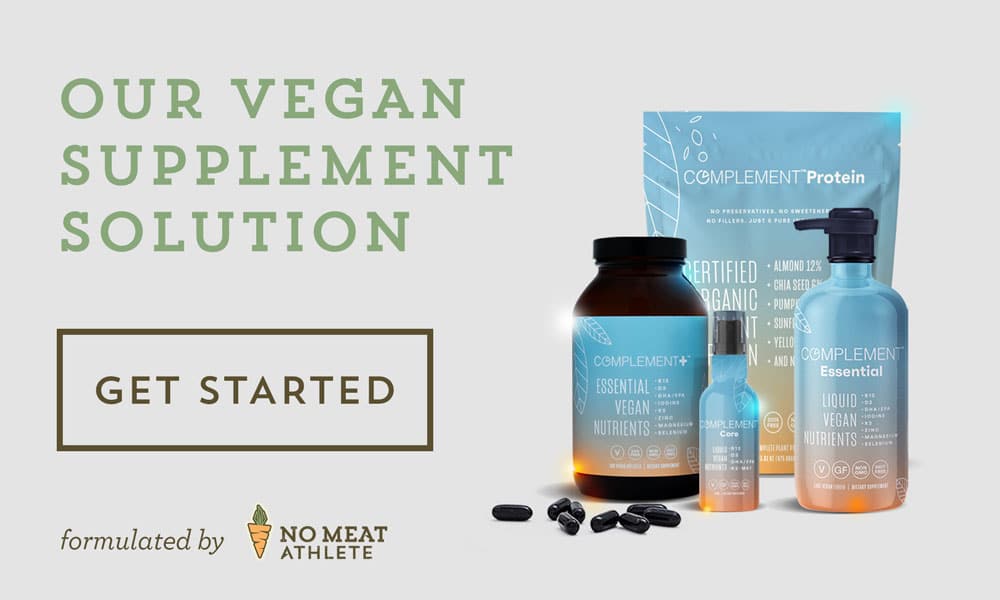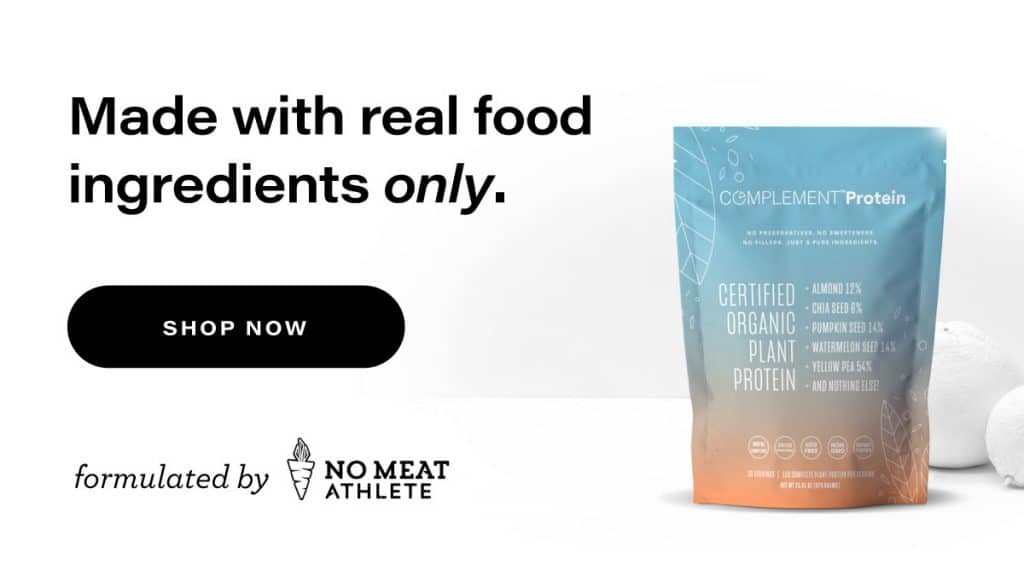
5 Non-Negotiable Vegan Foods to Eat Every Day (if You Want to Live a Long, Healthy Life)
Everybody loves to talk about the latest and greatest disease-preventing superfood — but have you actually made a part of your daily diet?
As a cardiovascular nurse and nutrition consultant, I spend much of my time wading in the muck of preventable chronic diseases, and I’ve dedicated my life to understanding nutrition science and lifestyle medicine.
And more importantly for you, how those two disciplines can be used to prevent and treat disease.
What I’ve found is that certain health foods — normal foods, not hard-to-find superfoods — have a remarkable capacity to protect you from disease, increase athletic performance, and give you a fighting chance of living a long, healthy life.
Below I’ve compiled a list of five food types that meet this criteria . Foods that I recommend vegans eat every single day — without exception.
Here they are: the five best possible answers to the question “What do vegans eat?“
1. Legumes
Let’s focus for a minute on the longest living populations on earth today that enjoy the best health and least amount of chronic disease.
They nearly all have one important thing in common from a nutritional perspective:
Beans.
Get past the flatulence jokes, and it turns out that beans are a nutritional powerhouse and should be taken seriously.
Legume intake has been shown to significantly reduce the risk of heart disease, cancer and diabetes, among other effects. And for good reason …
Beans contain a number of important macro and micro nutrients like protein, iron, zinc, folate, fiber and potassium. Some of the phytochemicals present in beans can even be associated with producing an anti-oxidant and anti-inflammatory effect and help us regulate our blood sugar and blood pressure as well as promote the growth of beneficial gut bacteria.
Note: Looking for an easy way to make sure you get all the hard-to-find nutrients on a plant-based diet? Check out Complement Plus.
Almost sounds too good to be true, but it isn’t.
In 2007, the most comprehensive analysis of diet and cancer ever conducted was published by the American Institute for Cancer Research (AICR).
Nine independent research teams from around the globe with some of the brightest minds in cancer prevention combed through nearly half a million studies to create a scientific consensus on the best ways to reduce the risk of developing this disease. In their final report, they concluded that people should be eating beans with every meal.
Here are three quick ways to easily incorporate more beans into your diet:
- Add black beans to a salad
- Spread hummus on a slice of whole wheat toast
- Use refried beans in a vegan quesadilla or burrito
2. Fruit
Who doesn’t love biting into a ripe mango on a hot summer day, or eating a bucket full of freshly picked blueberries?
As it turns out, Americans fall woefully short of the recommended daily intake of fruits and this is not without consequence.
The 2010 Global Burden of Disease Study, funded by the Bill & Melinda Gates Foundation, was conducted by nearly 500 researchers from more than 300 institutions in 50 countries and took years to finish.
The study concluded that in the United States, the leading cause of death and disability was the American diet and that the worst part of our nutritional habits was not eating enough fruit.
Not vegetables or whole grains, but fruit.
Berries, in particular, seem to be the MVP of the fruit world and offer serious protection against cancer, boost immune cell activity, and protect the liver and the brain. A study of nearly 100,000 men and women, conducted by the American Cancer Society, found that those who ate the most berries were significantly less likely to die of cardiovascular disease.
I happen to love fruit as a source of fuel during long races and training sessions so for you athletes out there, consider that application as a great way to boost your daily intake.
Here are three more ways to incorporate more fruit into your daily routine:
- Make a frozen, mixed berry sorbet using a masticating juicer or high-powered blender
- Eat an entire meal of just fruit including mangoes, bananas, berries, watermelon, etc.
- Throw assorted fruits into a smoothie
3. Greens
Dark-green, leafy vegetables may be the healthiest foods on the planet.
They offer the most nutrition per calorie and the greatest array of disease-fighting, performance-enhancing nutrients. And yet, today only about 1 in 25 Americans consume even a dozen servings per month when you should be shooting for at least a dozen servings per week.
Eating greens, especially of the cruciferous variety, is likely to be one the most powerful steps you can take to prolong your life.
Here are three easy ways to get more greens into your diet:
- Add kale and/or spinach to a smoothie
- Make a large spinach salad with your favorite toppings
- Use Romaine lettuce to make hummus and veggie wraps
4. Whole Grains
I mentioned earlier that daily bean consumption was recommended for preventing cancer by the AICR.
That same analysis determined that whole grains were just as effective as beans and should be consumed with every meal.
A 2015 analysis of Harvard’s famous Nurses Health Study and the Health Professionals Follow-Up Study — which have accumulated more than three million person-years of data — found that people who eat the most whole grains often live significantly longer independent of other lifestyle factors like smoking or obesity, etc.
If that doesn’t convince you, I don’t know what will.
This is in no way surprising, considering the evidence that whole grains appear to mitigate the risk of heart disease, diabetes, obesity and stroke and are quite adept at reducing inflammation, despite some of the nonsense you read circulating through the blogosphere about grains being pro-inflammatory.
*Clears throat*
I absolutely love barley, brown rice, buckwheat, quinoa, and rye, or simply adding whole wheat pasta or wild rice to a dish. Try experimenting with these if you aren’t already accustomed to eating them.
And if you have Celiac disease or a legitimate gluten sensitivity, you can still enjoy many of the benefits of these foods, you just have to choose the gluten-free varieties.
Here are three ways to get more whole grains in your body:
- Make pasta using 100% whole wheat varieties
- Use quinoa as a base for a veggie stir fry
- Make a sandwich using sprouted, whole wheat toast
5. Nuts
The Global Burden of Disease Study, which I mentioned earlier, determined that inadequate nut and seed intake was the third-leading dietary risk factor for death and disability in the world and thought to lead to the death of millions of people every year. Yikes.
But that doesn’t mean you should be scarfing down mounds of nuts.
Just one handful (1/4 cup) of nuts, five or more days a week, is associated with an increase in lifespan by two years. This seems hard to believe but it turns out that nuts are extraordinary plant foods with remarkable disease fighting properties.
And if I had to choose just one?
Walnuts.
Walnuts have the highest antioxidant and omega-3 content and appear particularly adept at killing cancer cells.
Here are three ways to eat more nuts:
- Make your own trail mix for work using assorted raw nuts
- Use nut butters like almond or cashew butter for spreads or dips
- Throw some walnuts in a salad or smoothie
- Add real food protein powder (with nuts and seeds) to a smoothie or baked good
The Meal That Brings it all Together
So are you wondering what the best way to combine all of these healthy everyday foods into one quick and convenient meal is? Try this:
Every day eat a large spinach and mixed greens salad with black beans, blueberries, walnuts and other veggies on a bed of quinoa or brown rice. Top that off with a cashew-based salad dressing and you’re done.
So easy. So delicious.
When it comes to living a long, healthy and productive life, this approach will keep science on your side and disease at bay.
About the Author: Aaron is a cardiovascular nurse, health coach and nutrition consultant, ultra-endurance athlete, father and husband. He also co-hosts the Thought For Food Podcast, writes for Vegan Health & Fitness Magazine and speaks to the public about preventing and reversing heart disease.
Leave a Reply
-
Thank you! I am new to a plant based diet and cannot eat gluten, soy, or any legumes. I’m slowly getting over my worry that I will be unhealthy without the legumes.
-
Is it possible that this is not the right website for you? These foods are pretty much the core of the no-meat athlete diet.
-
Thank you so much for these helpful starters. I have found this blog and the non-negotiable suggestions to be most helpful in determining how to start the vegan way of eating. I have been a vegetarian for about seven years and I am now working my way over to a vegan diet. I do want to comment on pdw’s post. I believe that we all must use our best judgement as to what foods will work best for us. Since pdw is allergic to almost everything mentioned in the blog, there may be some major health issues going on. Pdw may need to seek help from a medical professional.
-
You can actually eat foods that you are allergic too and if you do it right (small quantities) over a long period of time your body will adapt to it. No human should be allergic to healthy foods. People with peanut allergies have eaten peanuts in very small amounts day after day until eventually they can actually eat a normal serving of peanuts without any reactions. There are also many plant based diets that help you stop allergic reactions. Do some research about it. It’s really amazing information! Vegan life!
Great article! My mom is trying to eat healthier, so this will come in handy in advising her on dietary proiorities– gotta get the most bang for your buck. Obviously, if you’re allergic/intolerant/sensitive to these foods, the article isn’t directed at you.
Don’t forget to cook your legumes with Kombu! It helps prevent digestion troubles, and adds nutrition!
Be Well
I know this blog post is not necessarily about weight loss but for those who are trying to burn fat I have enjoyed success by omitting nuts.
Yes, I concede, the author is only suggesting 1/4 cup of nuts but I could never eat just a quarter cup. I find nuts very ‘moreish’.
Also as much as I try and eat greens I also juice with a lot of them. Especially on days when I know I will struggle to get them in. (In full disclosure I host the Juicing Radio podcast so am a bit biased)
Great post through. Thank you
This is great – I love the generality of the checklist – what an asset for making a menu. Thank you.
I agree with Aaron. My dietician and doctor advised me to include fruits in my morning diet. Not only do they contain a good amount of fiber, they have the essential vitamins and minerals to provide you with soft and clear skin. Just imagine getting rid of acne and pimples by consuming fruits and veggies. Isn’t that great?
Thank you for this article. I will never be an athlete, just being able to walk and climb stairs without pain is my goal in life. I am 58 year old female, very obese and I worry about having a heart attack, my doctor tells me to eat plant based and lose weight and greatly reduce sodium. But the vegan programs and cookbooks are just to complicated using ingredients I have never heard of or simple do not like, such as lentils and ginger. I have wasted sooooo much money on programs and cookbooks just trying to find something simple. I will try to use the outline you expressed above as a starting point and see what recipes I can come up with using these basic ingredients to try to regain my health. Again, Thank you for this article.
-
Hi Belinda.
Here’s a simple recipe for you;
Black beans with rice, red onions and some balsamic vinegar.
Then steam some broccoli later on for a snack.
Now get used to it and realise that not every meal has to be absolutely amazing and OH-SOOO tasty. Put your short-term pleasure aside. “This doesn’t taste good” is a lame excuse and one that will have you turning back to McDonalds in no time. Sure, vegan food CAN taste amazing, but you’re kidding yourself if you think you can make such a big lifestyle change and expect everything to be hunky dory without having to make some sacrifices. Make things easy on yourself, make meals simple as hell to begin with.
You’ll get used to it, and then you’ll love the recipe I suggested. Just let your taste buds change.
Thank you so much for the info! I’ve been Vegan now for over 2 years going on 3 and have never looked back! What’s more simple than the beautiful array of food Nature provides us with! There are so many options too for those who do have limitatins or restrictions!
The true problem with some of those people are more mental and emotional rather than for the physical reasons they attempt to use as a subconscious reasoning as to why they CAN’T do this or CAN’T do that. I understand some people do have severe allergies, and fortunately, nowadays, by changing your lifestyle and acctualy using your conscious mind to make the decision to eat the right food can and most likely will alleviate symptoms if not rid you of your nasty allergies which were cause by poor eating and life style habits in the first place.
God bless Aaron. Thanks for the great recipe! Going to try it this week!
I like this article! The only things I would add to the list are potatoes and sweet potatoes; they’re highly nutrient- dense, and there’s also evidence of associations between consumption of potatoes and longevity.
i was expecting seaweed, brazil nuts , flax seeds to be a part of the list
Started vegan today, excited to be healthier in 2021! Thank you
THANK YOU, I’M GOING SHOPPING NOW!







Non-negotiable?
Those of us with food allergies, intolerances, or metabolic differences have to find ways to eat to work around the foods that we are unable to eat.
I know a couple of people who are deathly allergic to legumes. I sometimes have to limit my fruit intake due to oral allergy syndrome, fructose issues, or ulcers. A couple of fruits cause me anaphylaxis. While I do eat greens, they really slow down my digestion, so I have to be careful not to overdo it.
As for grains… I can’t eat any grains, even gluten-free ones. However, two of the ‘grains’ you mentioned are actually pseudocereals, not part of the grass family, and I am able to eat buckwheat and quinoa (and do regularly!) My main starch is potatoes (and other root vegetables.)
And nuts… luckily I only have anaphylaxis with almonds and walnuts, so I am able to eat pecans and cashews. I am also okay with coconut and with seeds like sunflower, pumpkin, and hemp. But a lot of allergy sufferers have to avoid all tree nuts and any seeds that are processed on the same equipment/in the same plants.
So… good for you, yes. But non-negotiable… no, not really. Our bodies are amazing instruments and incredibly adaptable. Even those of us with multiple allergies and intolerances can usually find a way to make a whole food, plant-based diet work.